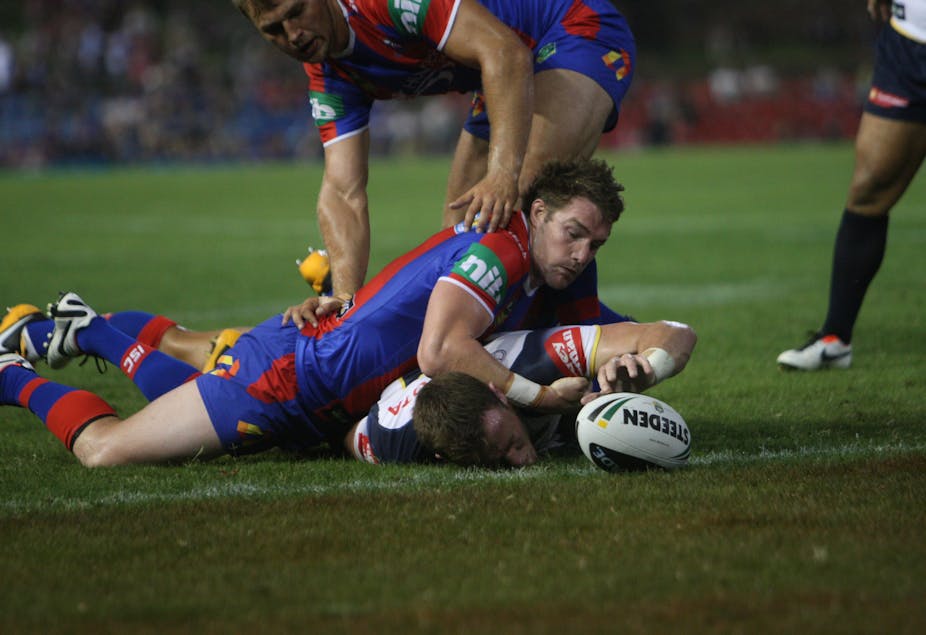The new National Rugby League (NRL) season has quickly shown that the use of performance enhancing drugs is not the only ongoing threat to player welfare. The sight of an unconscious Ashley Harrison from Gold Coast Titans, being stretchered from the ground after being knocked out was a vivid reminder of the importance of properly managing concussion in “collision sports”.
Since 2011, the NRL has made it mandatory for any player who may have suffered a concussion to be removed from the field and to be examined by a medical practitioner. The guidelines prohibit any player diagnosed with concussion from continuing to play on the same day.
Any breach of this “concussion exclusion rule” may be sanctioned with fines levied on the club or coaching or medical staff. The NRL has included these concussion guidelines as part of the official rules of the league.
Last week, the Australian Football League (AFL) hosted the Concussion in Football Conference 2013, which discussed an updated version of the global protocol for managing concussion in all sports.
At the conference, the chief medical officer of the NRL, Dr. Ron Muratore, presented an overview of how the football code had been managing concussion over the last two years. He also explained the reasons for his often-made statement that concussion is taken very seriously in rugby league.
Muratore also explained the way in which the NRL monitors compliance with its concussion guidelines. Currently, the chief medical officer may investigate incidents of suspected concussion to ensure that the guidelines were correctly followed. His findings are compiled in a report and one might expect the expert medical opinion of the NRL’s chief doctor is given weight by the code’s administrators in deciding whether to impose sanctions for failure to comply with the guidelines.
To date, no club, doctor, or trainer has been fined for breaching the concussion guidelines. Is this because medical and coaching staffs have fully complied with the concussion guidelines? Or does it mean that the monitoring of compliance has been less than rigorous? Anyone who saw a concussed Robbie Farah remain on the field for the whole of last year’s State of Origin decider may well wonder.
During a public question-and-answer session that followed his presentation, Muratore was asked if he had written any reports in which he concluded that a team doctor or trainer had, or may have, breached the concussion guidelines. He said this had been the case on “two or three occasions” but made no mention of any consequences.
Why have no sanctions for failure to comply with the concussion guidelines been recorded (or, if imposed not, made public) by the National Rugby League? To whom were Muratore’s reports sent within the NRL’s administration? Was the football code’s head of football operations aware of each of these reports?
If he was not, this raises serious questions about who is responsible for ensuring that concussions are managed according to the NRL’s code.
In the interests of transparency, all investigations of possible breaches of the concussion guidelines in the NRL (and the reasons for findings) should be made public. For some, the lack of any fines or other substantial sanctions raises the suspicion that the NRL is reluctant to acknowledge that cases of concussion may have been mismanaged.
Sanctioning any clubs found to have breached the concussion guidelines would be the best way for the NRL to demonstrate its commitment to managing concussion. It’s a step that would reinforce the necessity for the thousands of amateur and junior rugby league players to take the issue of concussion seriously.
If the NRL is, as it claims, putting player welfare first, then it must ensure that its clubs plays by the rules for managing concussion.

